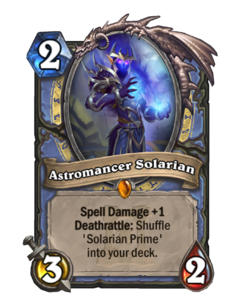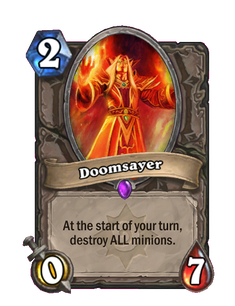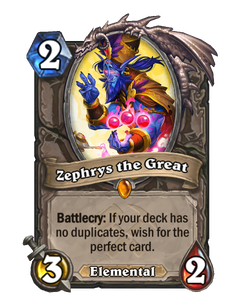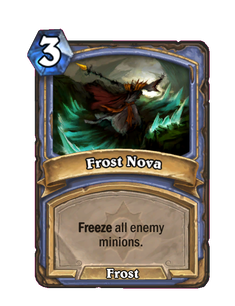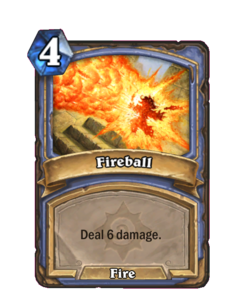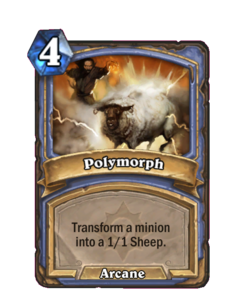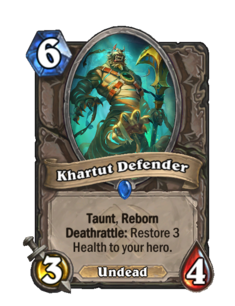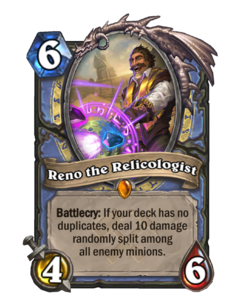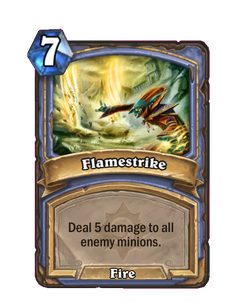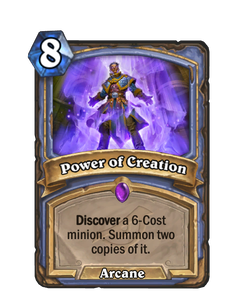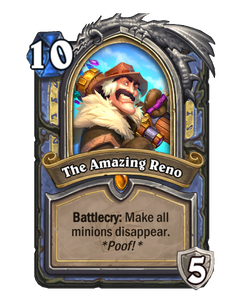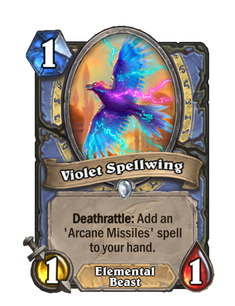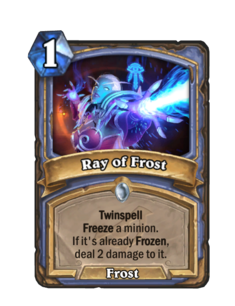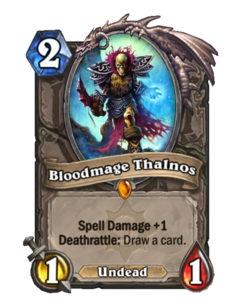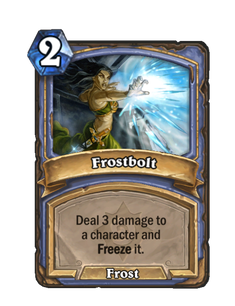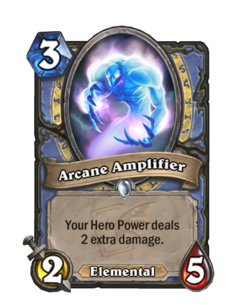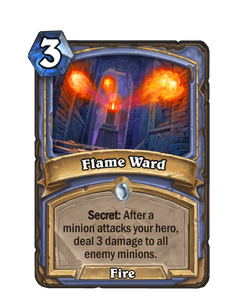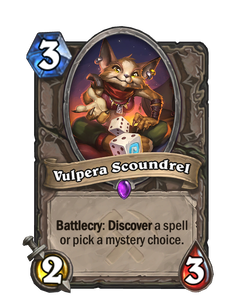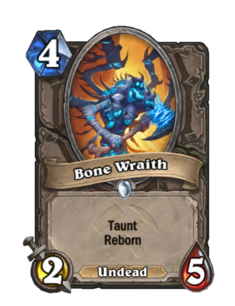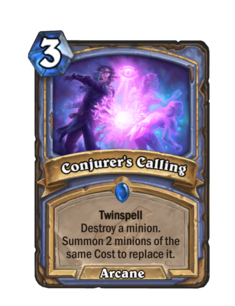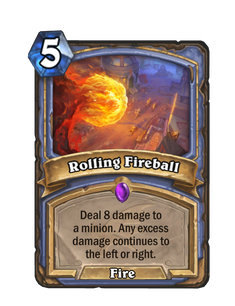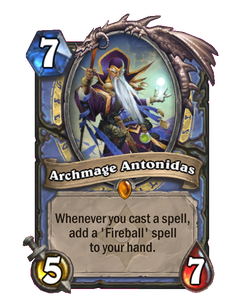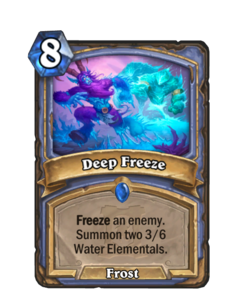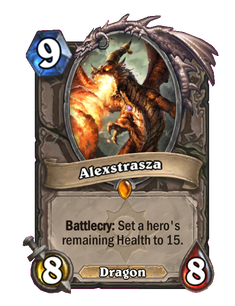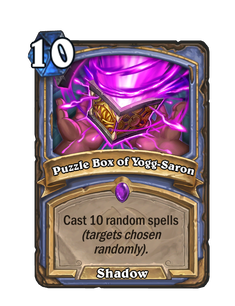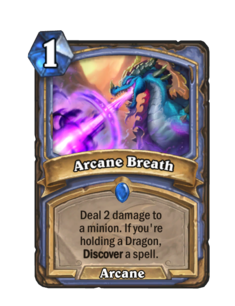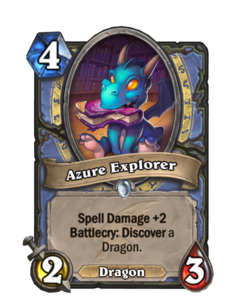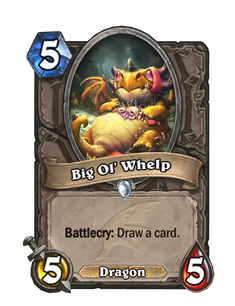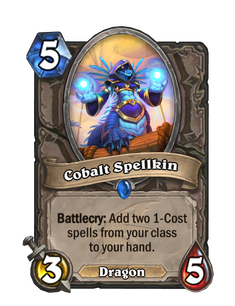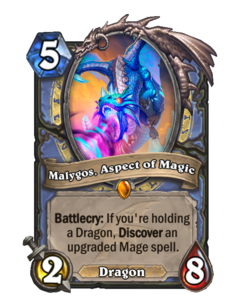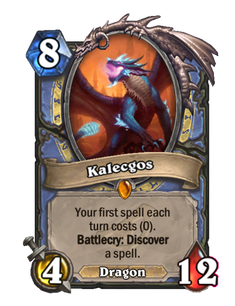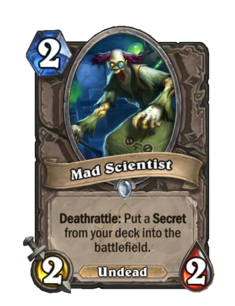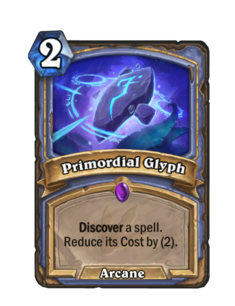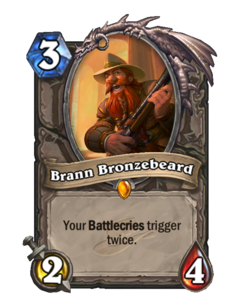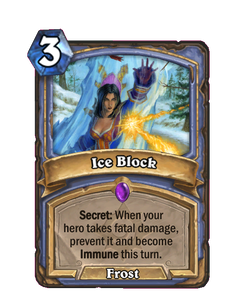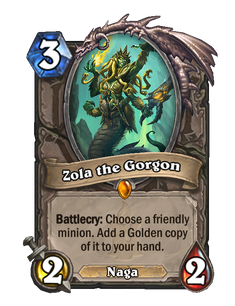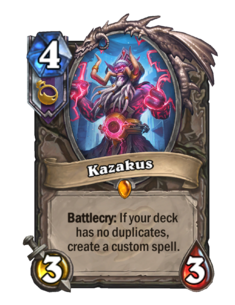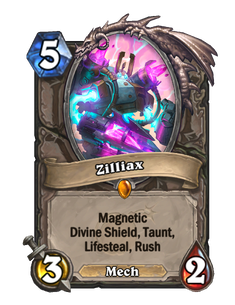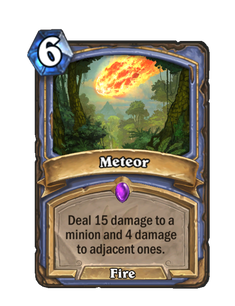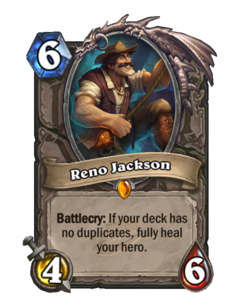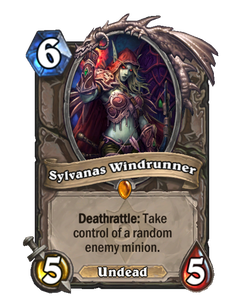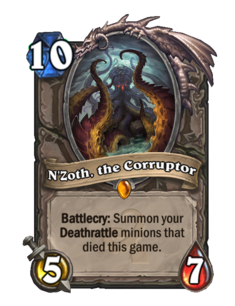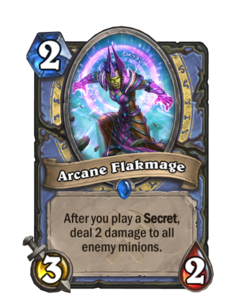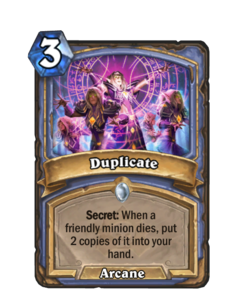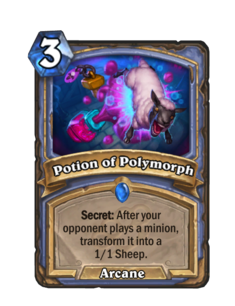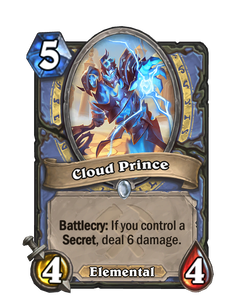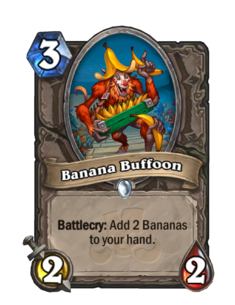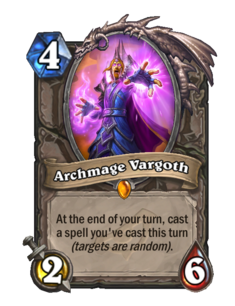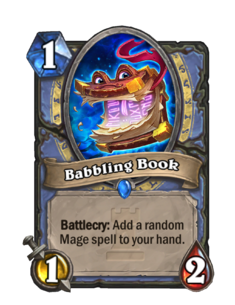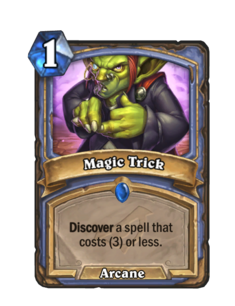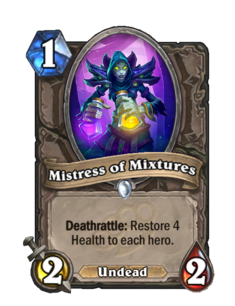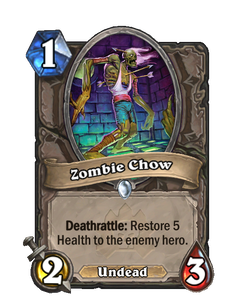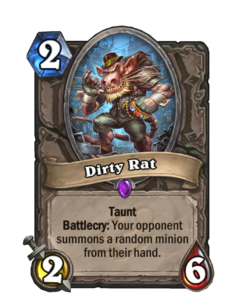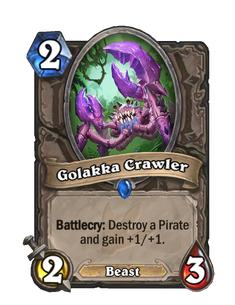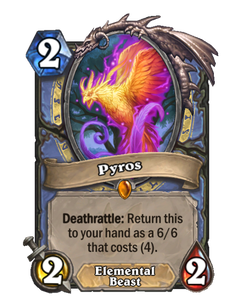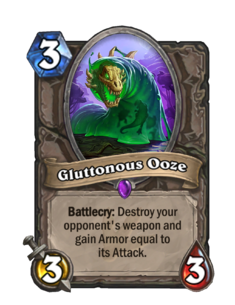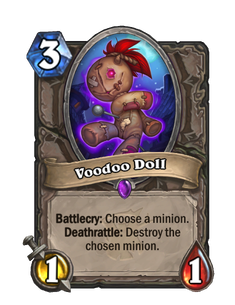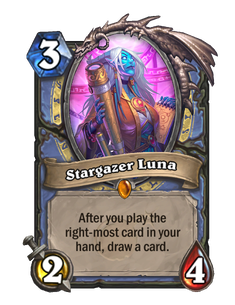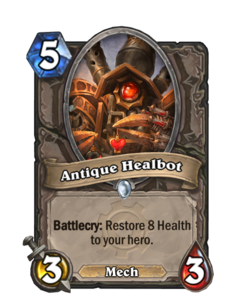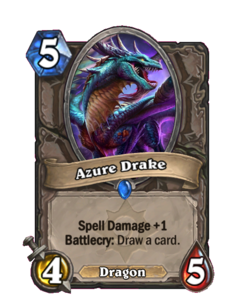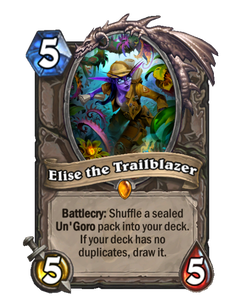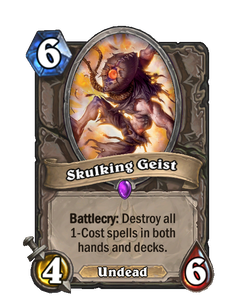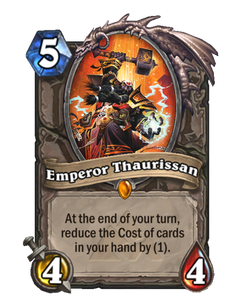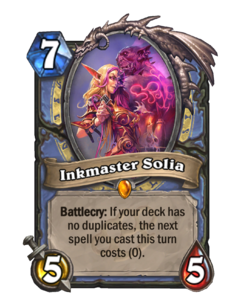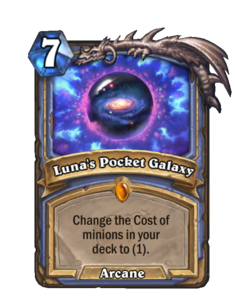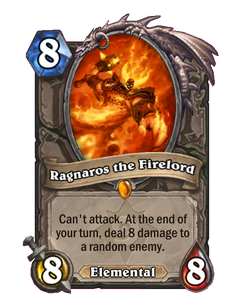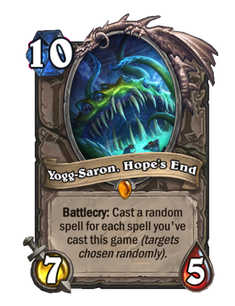Hearthstone Wiki:Archived/Highlander Mage
They may also contain information that changes at such a rapid pace that maintaining them is no longer practical.
Highlander Mage (also known as Reno Mage) is a Mage deck type that utilizes highlander cards like ![]() Reno the Relicologist and
Reno the Relicologist and ![]() Zephrys the Great to outlast opponents. Reno Mage has access to a variety of cards to outlast the opponent and generate value. A Standard Reno Mage would be able to utilize
Zephrys the Great to outlast opponents. Reno Mage has access to a variety of cards to outlast the opponent and generate value. A Standard Reno Mage would be able to utilize ![]() Conjurer's Calling and
Conjurer's Calling and ![]() Mountain Giant,
Mountain Giant, ![]() King Phaoris, and
King Phaoris, and ![]() Hex Lord Malacrass to generate value in the late game.
Hex Lord Malacrass to generate value in the late game. ![]() Reno the Relicologist,
Reno the Relicologist, ![]() Flame Ward, and
Flame Ward, and ![]() Doomsayer also keep Reno Mage safe in the early game.
Doomsayer also keep Reno Mage safe in the early game.
In Wild, Reno Mage not only has access to ![]() Reno Jackson,
Reno Jackson, ![]() Kazakus, and
Kazakus, and ![]() Inkmaster Solia, but also a Deathrattle package with N'zoth, the Corruptor, causing Reno Mage to be even stronger in Wild, especially against aggressive decks.
Inkmaster Solia, but also a Deathrattle package with N'zoth, the Corruptor, causing Reno Mage to be even stronger in Wild, especially against aggressive decks.
Deck type[edit source]
Reno Mage is a highly versatile deck, being particular "modular". A typical Reno Mage deck would utilize packages of cards synergizing to some mechanics. This is also seen in other control decks, especially in other Highlander decks, but nowhere near the degree of Reno Mage. Some common packages of cards Reno Mage has access to includes Secrets, Deathrattles, and summoning.
Many typical Reno Mage decks don't feature a particular win-condition, and victories are mostly accomplished through consistently controlling the board and outvaluing the opponent. Due to Reno Mage's ability to adapt to the meta, Reno Mage will almost certainly be viable under any meta, and this is what often put Reno Mage at an advantage compared to other Highlander decks.
Against aggro decks, Reno Mage can consistently stall with cards like ![]() Frost Nova,
Frost Nova, ![]() Doomsayer, and
Doomsayer, and ![]() Flame Ward, then establish a board and slowly recover in the late game with
Flame Ward, then establish a board and slowly recover in the late game with ![]() Reno Jackson and
Reno Jackson and ![]() Flamestrike. Due to the nature of Highlander decks, more value-oriented Reno Mage variants often depend heavily on luck in the early game to survive. Cards such as
Flamestrike. Due to the nature of Highlander decks, more value-oriented Reno Mage variants often depend heavily on luck in the early game to survive. Cards such as ![]() Tar Creeper, and
Tar Creeper, and ![]() Ice Barrier are often played in Reno Mage when aggro decks are prevalent in the current meta.
Ice Barrier are often played in Reno Mage when aggro decks are prevalent in the current meta.
Against control decks, Reno Mage can likely outvalue the opponent, with access to a variety to Hearthstone's most efficient removal tools such as ![]() Polymorph and
Polymorph and ![]() Flamestrike. Reno Mage often struggles with Highlander mirrors due to its focus on tempo, and being inconsistent at removing large boards such as those created by
Flamestrike. Reno Mage often struggles with Highlander mirrors due to its focus on tempo, and being inconsistent at removing large boards such as those created by ![]() N'Zoth, the Corruptor or
N'Zoth, the Corruptor or ![]() Bloodreaver Gul'dan.
Bloodreaver Gul'dan.
Against combo decks, Reno Mage has a few combo-disruption cards such as ![]() Potion of Polymorph, and
Potion of Polymorph, and ![]() Deathlord.
Deathlord. ![]() Ice Block can also disrupt many combos, such as
Ice Block can also disrupt many combos, such as ![]() Shirvallah, the Tiger and
Shirvallah, the Tiger and ![]() Holy Wrath combo in Holy Wrath Paladin. If combo decks become very popular, Reno Mage can also react by using
Holy Wrath combo in Holy Wrath Paladin. If combo decks become very popular, Reno Mage can also react by using ![]() Dirty Rat,
Dirty Rat, ![]() Hecklebot, or
Hecklebot, or ![]() Unseen Saboteur.
Unseen Saboteur.
![]() Ice Block also makes
Ice Block also makes ![]() Reno Jackson much more useful. Other Highlander decks are often forced to play Reno suboptimally to be safe. With Ice Block, however, Reno Mage can save Reno because Ice Block almost guarantees a turn of survival. Due to Ice Block, Reno Mage decks can often play Reno at around 1 health, making the most out of an already valuable card.
Reno Jackson much more useful. Other Highlander decks are often forced to play Reno suboptimally to be safe. With Ice Block, however, Reno Mage can save Reno because Ice Block almost guarantees a turn of survival. Due to Ice Block, Reno Mage decks can often play Reno at around 1 health, making the most out of an already valuable card.
Although Reno Mage can easily adapt to the meta, it is difficult for Reno Mage to change playstyles in a particular game. Reno Mage lacks tools for applying pressure early in the game, whereas Renolock has ![]() Mal'Ganis and
Mal'Ganis and ![]() Voidcaller, and Highlander Priest has
Voidcaller, and Highlander Priest has ![]() Northshire Cleric and
Northshire Cleric and ![]() Drakonid Operative. Alongside not having tools to apply pressure, Reno Mage also struggles with hand manipulation and card generation, making it even more difficult to change playstyles during a game. Against Mech Hunter, Highlander Priest decks could use
Drakonid Operative. Alongside not having tools to apply pressure, Reno Mage also struggles with hand manipulation and card generation, making it even more difficult to change playstyles during a game. Against Mech Hunter, Highlander Priest decks could use ![]() Shadow Visions for
Shadow Visions for ![]() Psychic Scream, but when facing Aggro Druid, use Shadow Visions for
Psychic Scream, but when facing Aggro Druid, use Shadow Visions for ![]() Shadow Word: Horror. A Renolock for instance, can also use
Shadow Word: Horror. A Renolock for instance, can also use ![]() Expired Merchant to manipulate the hand. A Control Warrior would also be able to use
Expired Merchant to manipulate the hand. A Control Warrior would also be able to use ![]() Omega Devastator in the early game as a decently-sized threat against an aggro deck, but save it for removal when facing a control deck. Reno Mage has no similar card or combination of cards like that of the above-mentioned decks to change playstyles during a game.
Omega Devastator in the early game as a decently-sized threat against an aggro deck, but save it for removal when facing a control deck. Reno Mage has no similar card or combination of cards like that of the above-mentioned decks to change playstyles during a game.
History[edit source]
When Reno was first released in League of Explorers, Mage was not the best class to play him in. At the time, Freeze Mage was a much better option for Mage, and Warrior was generally a better fit for Reno. One year later, following the release of Mean Streets of Gadgetzan, Mage, alongside the other Kabal classes, received ![]() Kazakus. Reno Mage was then made into a competitive deck with Highlander Priest and Renolock. Reno Mage was able to perform better against aggro decks compared to other control decks at the time, with
Kazakus. Reno Mage was then made into a competitive deck with Highlander Priest and Renolock. Reno Mage was able to perform better against aggro decks compared to other control decks at the time, with ![]() Frost Nova,
Frost Nova, ![]() Blizzard,
Blizzard, ![]() Flamestrike, and
Flamestrike, and ![]() Polymorph.
Polymorph.
Reno Mage quickly fell out of favor again one expansion later after the Year of the Mammoth rotation made ![]() Reno Jackson a Wild-exclusive card. Highlander Priest consistently outperformed Reno Mage for the entirety of the Year of the Mammoth. After the Year of the Raven rotation,
Reno Jackson a Wild-exclusive card. Highlander Priest consistently outperformed Reno Mage for the entirety of the Year of the Mammoth. After the Year of the Raven rotation, ![]() Kazakus,
Kazakus, ![]() Inkmaster Solia,
Inkmaster Solia, ![]() Raza the Chained, and
Raza the Chained, and ![]() Krul the Unshackled all rotated into Wild, making all Highlander decks in the Year of the Raven Wild-exclusive. In Wild, Renolock was often favored much more compared to other Highlander decks due to its demon package with
Krul the Unshackled all rotated into Wild, making all Highlander decks in the Year of the Raven Wild-exclusive. In Wild, Renolock was often favored much more compared to other Highlander decks due to its demon package with ![]() Voidcaller,
Voidcaller, ![]() Voidlord, Malganis, and
Voidlord, Malganis, and ![]() Sense Demons.
Sense Demons.
Highlander-supporting cards were added again in Saviors of Uldum with ![]() Zephrys the Great and
Zephrys the Great and ![]() Reno the Relicologist, bringing the archetype back to Standard. Mage was one of the four classes to receive class-specific Highlander-supporting cards, resulting in Reno Mage being popular among the new Highlander decks. Reno Mage was especially powerful in the first weeks of Savior of Uldum with
Reno the Relicologist, bringing the archetype back to Standard. Mage was one of the four classes to receive class-specific Highlander-supporting cards, resulting in Reno Mage being popular among the new Highlander decks. Reno Mage was especially powerful in the first weeks of Savior of Uldum with ![]() Luna's Pocket Galaxy and
Luna's Pocket Galaxy and ![]() Conjurer's Calling, and their supporting cards
Conjurer's Calling, and their supporting cards ![]() Kalecgos,
Kalecgos, ![]() Mountain Giant, and
Mountain Giant, and ![]() Tortollan Pilgrim. After the nerfs to Luna's Pocket Galaxy and Conjurer's Calling in Patch 15.0.4.33402, Reno Mage fell out of favor again, but still remained as a valid competitive deck.
Tortollan Pilgrim. After the nerfs to Luna's Pocket Galaxy and Conjurer's Calling in Patch 15.0.4.33402, Reno Mage fell out of favor again, but still remained as a valid competitive deck.
After receiving more support in Descent of Dragons with ![]() Dragonqueen Alexstrasza and a powerful Dragon package, Highlander Mage made a resurgence in the meta, as one of the most played decks in this period, Highlander Mage was even more powerful in tournaments due to players having the ability to control their matchups. As a strongly matchup-dependent deck, this made Highlander Mage much more popular in competitive settings than it was in Ranked Mode. In Wild, the new spell-generating Dragon cards like
Dragonqueen Alexstrasza and a powerful Dragon package, Highlander Mage made a resurgence in the meta, as one of the most played decks in this period, Highlander Mage was even more powerful in tournaments due to players having the ability to control their matchups. As a strongly matchup-dependent deck, this made Highlander Mage much more popular in competitive settings than it was in Ranked Mode. In Wild, the new spell-generating Dragon cards like ![]() Arcane Breath,
Arcane Breath, ![]() Malygos, Aspect of Magic, and
Malygos, Aspect of Magic, and ![]() Cobalt Spellkin greatly synergized with
Cobalt Spellkin greatly synergized with ![]() Open the Waygate. Paired with other staples in Reno Mage like
Open the Waygate. Paired with other staples in Reno Mage like ![]() Zephrys the Great,
Zephrys the Great, ![]() Kazakus,
Kazakus, ![]() Ray of Frost, and
Ray of Frost, and ![]() Primordial Glyph, the quest was completed effortlessly. As a result, combo-oriented Highlander Mage decks started to dominate the Wild meta. Additionally,
Primordial Glyph, the quest was completed effortlessly. As a result, combo-oriented Highlander Mage decks started to dominate the Wild meta. Additionally, ![]() Archmage Vargoth granting three turns in a row allowed easy victories even when the Giants for the combo were not drawn.
Archmage Vargoth granting three turns in a row allowed easy victories even when the Giants for the combo were not drawn.
In Ashes of Outland, Highlander Mage still remained a competitively viable deck in both formats, but still suffered a decreases in popularity due to the heavy disadvantage against Demon Hunter. However, the subsequent nerf to both Demon Hunter and ![]() Bad Luck Albatross once again proved the competitive viability of Highlander Mage in Standard. The nerf to
Bad Luck Albatross once again proved the competitive viability of Highlander Mage in Standard. The nerf to ![]() Open the Waygate was a severe blow on Wild Highlander Mage causing it to no longer hold a dominating position in the meta. It's also a pretty affordable deck archetype for new and returning players, as long as they're eligible for a free deck; the Mage free deck, "Reno's Riches", contains most of the core Highlander Mage package, including the three key legendaries — Reno the Relicologist, Zephrys the Great and Dragonqueen Alexstrasza.
Open the Waygate was a severe blow on Wild Highlander Mage causing it to no longer hold a dominating position in the meta. It's also a pretty affordable deck archetype for new and returning players, as long as they're eligible for a free deck; the Mage free deck, "Reno's Riches", contains most of the core Highlander Mage package, including the three key legendaries — Reno the Relicologist, Zephrys the Great and Dragonqueen Alexstrasza.
Common cards[edit source]
Core Standard cards[edit source]
The following cards are played in most or all Standard versions of the deck:
Optional Standard cards[edit source]
The following Standard cards are played more than occasionally, but not always:
Dragon Package[edit source]
Core Wild cards[edit source]
The following cards are played in most or all Standard versions of the deck:
Deathrattle package[edit source]
Secret package[edit source]
Quest package[edit source]
Optional Wild cards[edit source]
The following Wild cards are played more than occasionally, but not always:



